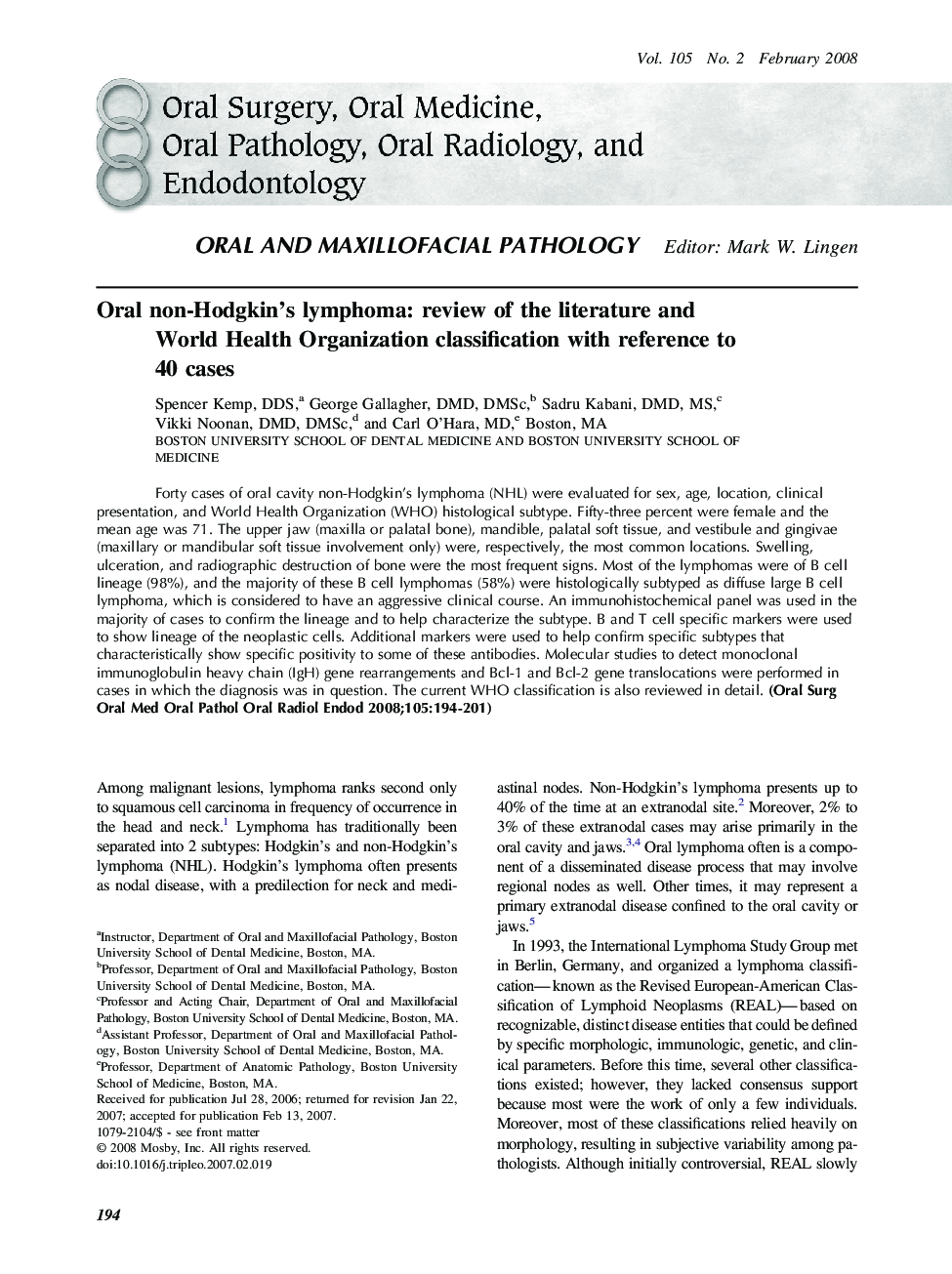| Article ID | Journal | Published Year | Pages | File Type |
|---|---|---|---|---|
| 3168943 | Oral Surgery, Oral Medicine, Oral Pathology, Oral Radiology, and Endodontology | 2008 | 8 Pages |
Forty cases of oral cavity non-Hodgkin’s lymphoma (NHL) were evaluated for sex, age, location, clinical presentation, and World Health Organization (WHO) histological subtype. Fifty-three percent were female and the mean age was 71. The upper jaw (maxilla or palatal bone), mandible, palatal soft tissue, and vestibule and gingivae (maxillary or mandibular soft tissue involvement only) were, respectively, the most common locations. Swelling, ulceration, and radiographic destruction of bone were the most frequent signs. Most of the lymphomas were of B cell lineage (98%), and the majority of these B cell lymphomas (58%) were histologically subtyped as diffuse large B cell lymphoma, which is considered to have an aggressive clinical course. An immunohistochemical panel was used in the majority of cases to confirm the lineage and to help characterize the subtype. B and T cell specific markers were used to show lineage of the neoplastic cells. Additional markers were used to help confirm specific subtypes that characteristically show specific positivity to some of these antibodies. Molecular studies to detect monoclonal immunoglobulin heavy chain (IgH) gene rearrangements and Bcl-1 and Bcl-2 gene translocations were performed in cases in which the diagnosis was in question. The current WHO classification is also reviewed in detail.
